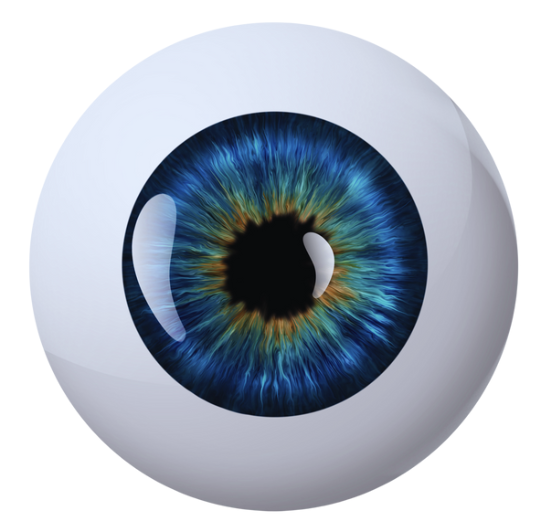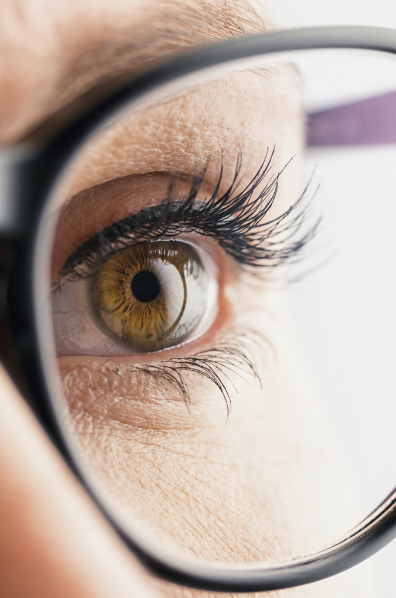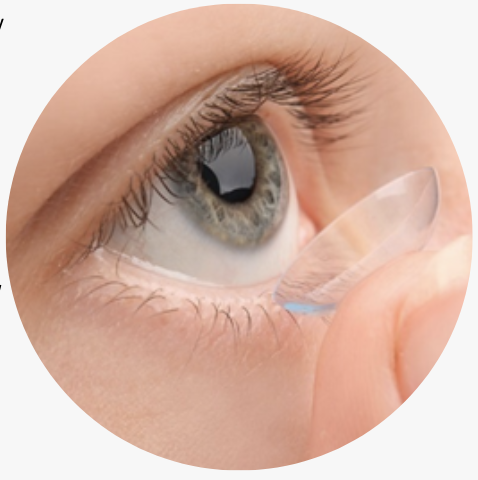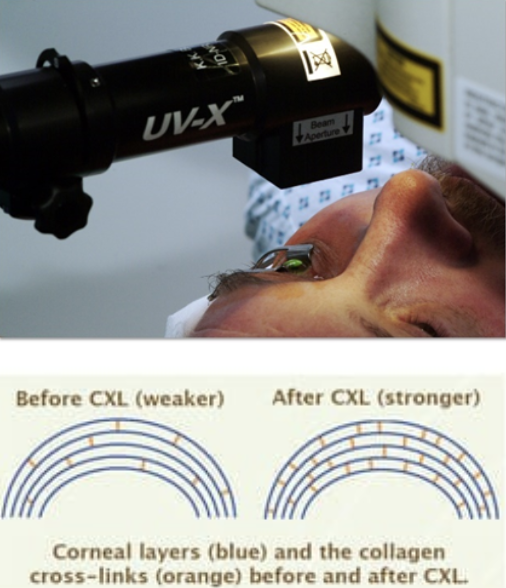Corneal Cross-Linking
What is Keratoconus?
Derived from the greek word for cornea (‘kerato’) and cone shaped (‘conus’)

What are the Symptoms of Keratoconus?
Usually it develops slowly. However, in some cases, keratoconus may proceed rapidly.





What are the Risk Factors for Developing Keratoconus?
- A family history of keratoconus
- Allergic eye
- Vigorous eye rubbing
- Certain conditions such as Retinitis Pigmentosa, Down Syndrome, Ehlers-Danlos Syndrome, Marfan Syndrome, Hay Fever, and Asthma

How is Keratoconus Treated?
Treatment depends on your symptoms and severity
1. WITH GLASSES OR SOFT CONTACT LENS
2. RIGID PERMEABLE CONTACT LENS
One of the most popular contact lenses for Keratoconus. These stable contact lenses essentially act as a second surface for the eye, compensating
These stable contact lenses essentially act as a second surface for the eye, compensating for the irregularities of the cornea and functioning as the eye’s new reflective surface. Its tear film sits between the cornea and the back of the contact lens, providing a gentle, comfortable fit.
To properly compensate for the damage done by Keratoconus, a rigid gas-permeable lens must be perfectly fitted and contoured to the shape of your eye.


2. RIGID PERMEABLE CONTACT LENS
This is a minimally invasive outpatient procedure designed to treat progressive keratoconus and similar conditions that weaken the cornea.
This two-step procedure strengthens and stabilizes the cornea by creating new links between collagen fibers. Firstly, your eyes will be numb by an eyedrop. The thin outer layer of the cornea (epithelium) will be removed, then a riboflavin (vitamin B) eye drop is applied to the corneal surface, followed by controlled exposure to ultraviolet light. Then the contact lens will be placed at the end of the procedure

Take the first step towards better eye health today!
Book your appointment now !
Your Trusted Eye Specialist Centre.
